After only a few months of ownership, we have had the first major issue with the Land Rover Range Rover Evoque. A noise came from the car when moving at low speeds. The sound was coming from the prop shaft and a replacement was required in order to resolve the issue. This is what led us to learn more about what replacing the prop shaft on Land Rover Range Rover Evoque is like.
Below is how to replace the prop shaft on the Land Rover Range Rover Evoque. The work was carried out by James at JMB Land Rover Services in Birmingham.
- Initial Diagnosis
- Replacement Process
- Removing The Bolts
- Removing The DPF Heat Shield
- Detaching The Prop Shaft
- Fitting In The New Prop Shaft
- FAQs
Prop Shaft Replacement
Below you will see how we identified the fault, removed the old prop shaft and replaced it with a new one. Specifically, we’ll be demonstrating how you can do it using a Land Rover Range Rover Evoque L358.
Replacing The Prop Shaft On Land Rover Range Rover Evoque, Step #1: Diagnosing The Fault
I contacted JMB Land Rover Services about the noise I heard from the car. James and I took it for a test drive so that we could listen to the sound and identify the issue. We could hear the noise but as the car was moving, it was difficult to identify where it was coming from so we took it back to the workshop and put the vehicle on the ramp and let the wheels run whilst in the air.
From under the vehicle, we could hear that the noise was either coming from the power transfer unit or the prop shaft. The next stage of the diagnosis was to briefly remove the prop shaft from the PTU. Once it was disconnected, the sound went away, so it was likely to be the prop shaft causing the issue.
Replacing The Prop Shaft On Land Rover Range Rover Evoque, Step #2: Replacing The Prop Shaft Process
The thought of changing a prop shaft on the Land Rover Range Rover Evoque L538 sounds like a big job without having the right tools and know-how. But it can be done in a relatively short time if you know what you’re doing. The overview of the process is:
- Leave the car in neutral.
- Lift it to a suitable height to work on from underneath.
- Remove six bolts from the rear flange joint.
- Use the release bolt to force the rear flange from the joint safely.
- Remove the DPF heat shield.
- Remove six bolts from the front flange joint.
- Support the prop in the air.
- Disconnect the central bearing from the bearing bracket.
- Remove bolts from the central bearing bracket.
- Carefully move the prop shaft out around the exhaust pipe.
- Follow the procedure in reverse to refit.
Replacing The Prop Shaft On Land Rover Range Rover Evoque, Step #3: Remove Six Bolts From Rear Flange
Removing the rear flange of the prop shaft from the pinion is the most difficult part and often people get it wrong. There are six bolts that need to be removed from the rear of the prop, however, often this joint will fuse together. I would recommend using WD40 or a similar product to free the components.
To separate the prop, there is a hole on the back of the pinion side that has been designed to push a bolt through. With just a few taps, the parts separated a lot easier than expected.
Replacing The Prop Shaft On Land Rover Range Rover Evoque, Step #4: Remove DPF Heat Shield
Before we will be able to fully remove the prop shaft, we will need to remove the DPF heat shield. There are four nuts that need to be removed and the shield will slide out, allowing access for the prop later.
Replacing The Prop Shaft On Land Rover Range Rover Evoque, Step #5: Remove Another Six Bolts From Front Flange
Moving to the front of the car, we needed to disconnect the prop from the PTU. There is more room to work and no force is needed to separate the components once the bolts have been removed.
As you can see below, there is a large bracket that holds the central bearing in place on the Range Rover. Firstly, we removed the two bolts that hold the bearing to the bracket. Then with one person supporting the prop shaft, we removed the four bolts that attach the bracket to the car. We moved the bracket onto the floor.
Replacing The Prop Shaft On Land Rover Range Rover Evoque, Step #6: Extracting The Prop Shaft
Now there is nothing holding the prop shaft in. To get it around the exhaust, we needed to move the prop forward, over the top of the original mount by around six inches. Then we carefully brought it out to the back of the car. Here you can see the fully extracted prop.
Replacing The Prop Shaft On Land Rover Range Rover Evoque, Step #7: Refitting The Range Rover Evoque Prop Shaft
To refit the Range Rover Evoque prop shaft, you just need to follow the above process in reverse. Once the process has been completed, it is essential to ensure that all settings are torqued up to the correct settings. You also need to make sure that the prop shaft is seated correctly and not restricted by anything such as the DPF heat shield.
Replacing The Prop Shaft On Land Rover Range Rover Evoque, Step #8: Root Cause Of The Issues
With the old prop shaft out, we could tell that the front joint no longer moved smoothly, possibly due to a lack of lubrication when originally created. You are unable to test this joint without moving the part from the car.
For Land Rover repairs and maintenance, see JMB Land Rover Services in Birmingham.
Disclaimer: If you are not a fully competent mechanic we recommend that you seek professional advice before starting work on your car.
Frequently Asked Questions
If you’re still curious about what replacing the prop shaft on Land Rover Range Rover Evoque is like, our FAQs here might help…
What Is A Drive Shaft
The driveshaft (sometimes referred to as the prop shaft) is a literal shaft which transfers power and torque from your car’s engine and transmission, and onto the differential. Basically, it’s a rotating shaft that transfers the energy and motion created by the engine. This power and torque are later controlled by the transmission, which is then used to move your car front and back. From the differential, the aforementioned power and torque are split accordingly between the driven wheels. Once it’s properly split, that power and torque are finally distributed to the driven wheels of your car. Therefore, without the driveshaft (aka prop shaft), there’s no way for your engine to actually make the car move at all.
How Much Is A Drive Shaft
If your car has a broken driveshaft (aka the prop shaft), a replacement tends to be costly. On average, a driveshaft replacement cost varies somewhere between $300 to $1,300, and sometimes more. It does depend on which driveshaft you’re replacing. For example, a half-shaft for a front-wheel drive car is cheap, as the shaft itself has small. Hence, you’re not paying a lot for the cost of the materials. However, what if the driveshaft that’s leading to the rear wheels is the one that’s broken? In this instance, it could cost you as much as $2,000 to replace the main driveshaft in a rear-wheel drive or four-wheel drive vehicle. Labour costs are often fairly minimal in comparison.
Where Is The Drive Shaft Located
Your driveshaft’s (aka the prop shaft) primary role is transferring power and torque from the engine and transmission. And finally, transmit that to the differential, before lastly going to the driven wheels to move your car around. As such, you’ll be able to find the driveshaft if you look between the transmission and the differential. For your rear-wheel drive, all-wheel drive, or four-wheel drive cars, this is fairly easy to spot. Just find the long, cylindrical tube running the length of the bottom of the entire car. It might be harder to spot for front-wheel drive cars. In this instance, you’ll have to locate the shorter half-shaft leading from the transmission’s output shaft.
Can You Drive With A Broken Drive Shaft
Technically speaking, it’s possible to drive with a broken driveshaft (aka the prop shaft). For example, let’s say that your car is all-wheel drive or four-wheel drive. And, your main driveshaft that sends power over to the rear wheels has broken. In this situation, it’s possible to keep on driving, but you’ll only be driven on the front wheels. Therefore, your AWD or 4×4 vehicle has effectively been turned into a front-wheel drive car. Nevertheless, it’s a very bad idea to drive with a broken driveshaft. This will allow the rest of the drivetrain to undergo immense strain. In the end, it’s a major compromise to your safety, as well as results in poor driveability from your car.
What Is A Half Shaft
The driveshaft is a spinning tube that is responsible for passing along power and torque to the driven wheels. In this case, we’re mainly talking about the rear-wheel drive or all-wheel drive cars. Thereby, the driveshaft’s long reach allows the engine and transmission to effectively send power to the rear. In the case of front-wheel drive, they have the half-shaft to manage the same thing… Send power to the driven wheels. Since the engine and driven wheels are both in the front, there’s no need for a full-sized driveshaft. Hence, why it’s called a half-shaft, as it’s significantly shorter. Its role is to extend from the transaxle and front differential to the front wheels.

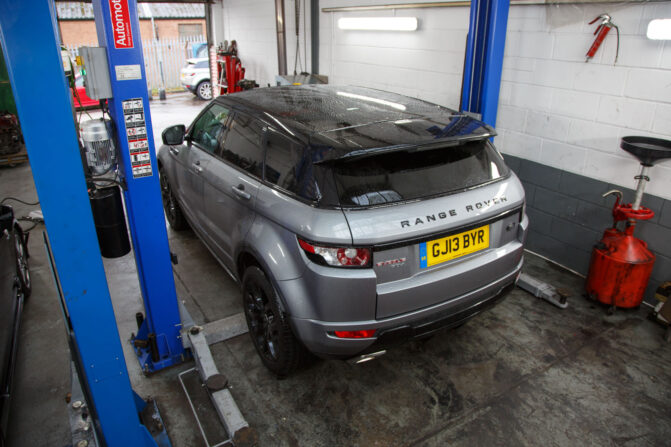
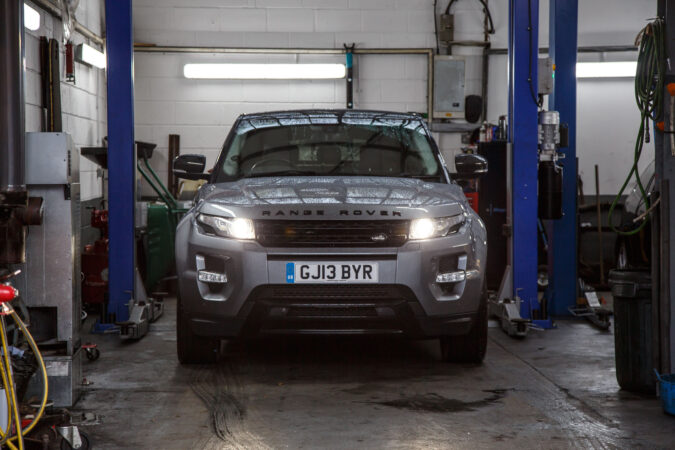
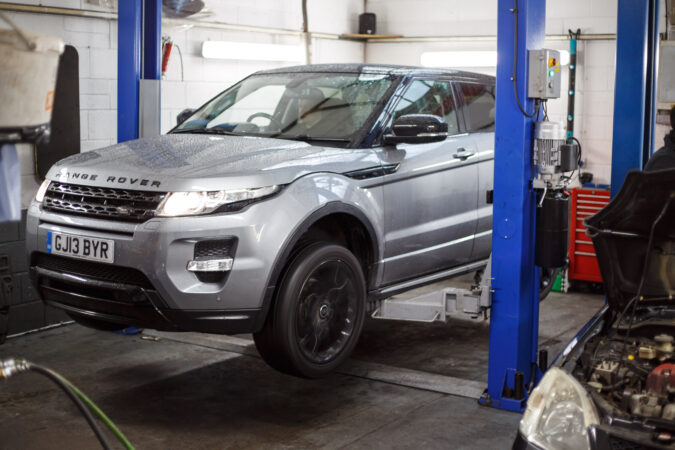
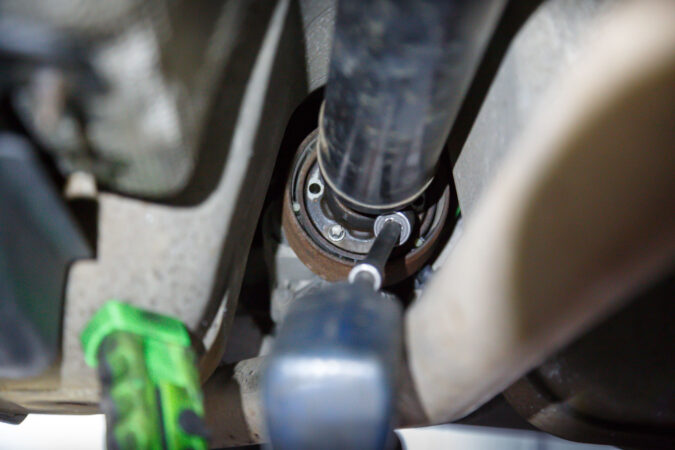
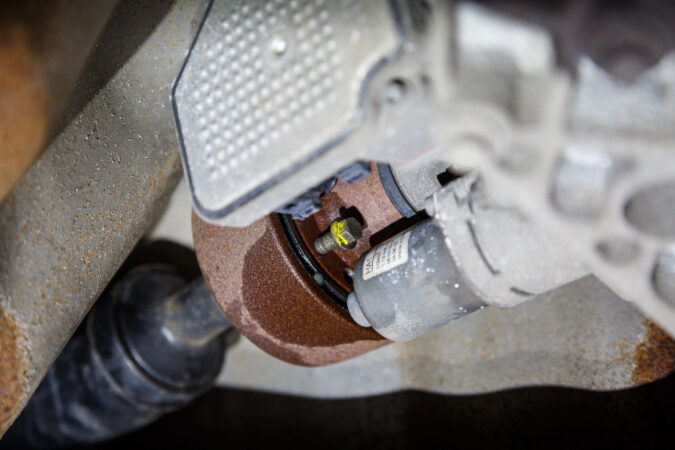
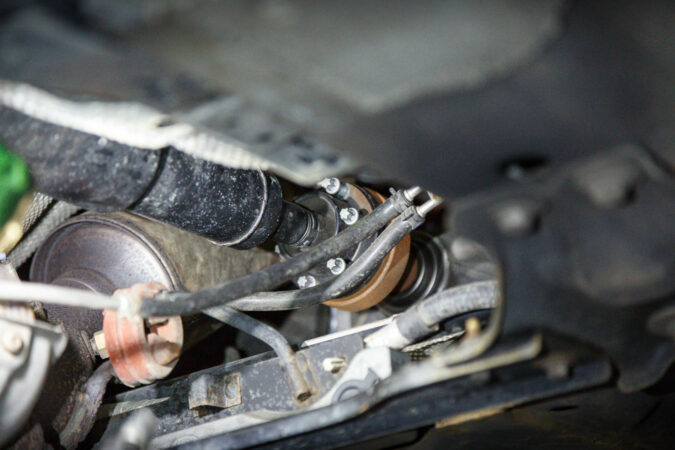
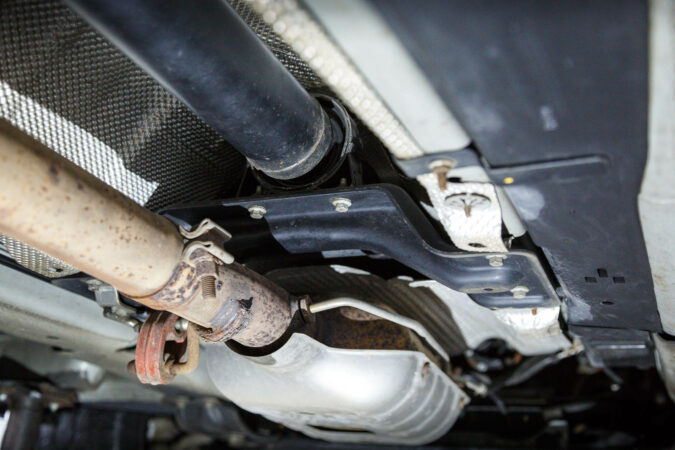
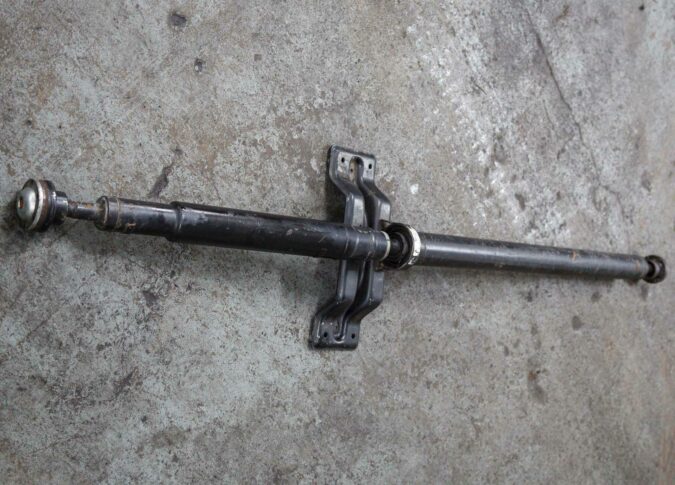
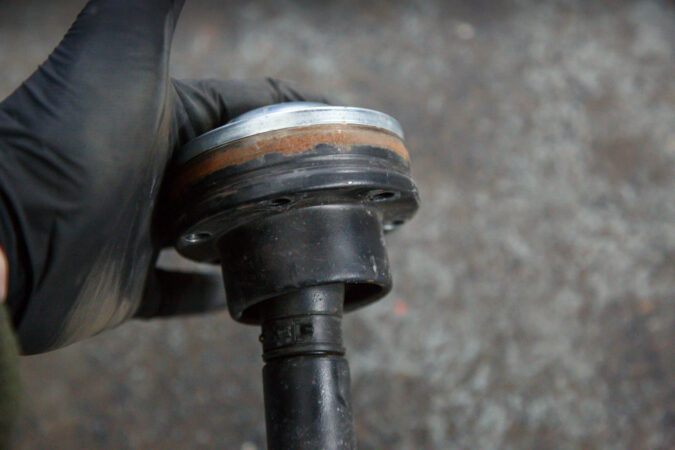
Nice piece. I notice that the driveshaft is a 2 piece. Almost every picture I see and the parts drawing in LR website always show a 2 piece shaft. But mine and just a few other pics on ebay I have found are a 3 piece. Also, do you know if any of the bearings on the shaft are serviceable or if there are issues the entire shaft has to be replaced?
It is my understanding that the shaft isn’t serviceable and it best to replace. If you are in the midlands, UK I can recommend a mechanic.
What size bolt is the release bolt? Once I know the right size I can buy it and screw it in… too separate flange. I can’t seem to find the right size bolt so far. I assume it metric, and what is the thread count? I am working on a 2013 Land Rover LR2. Has almost Identical set up. Have done everything but can’t seem to separate the flange from the prop/drivee shaft (haldex side/rear) Thanks.
Thanks for the comment, Thomas Dennin!
From what I can find based on reading some forum posts, it looks like the LR2 uses spine-head bolts instead of a hex one, so it might be a bit tough to remove. Apparently, some folks have been able to remove those bolts with an 11mm wrench in the rear, and a 10mm wrench in the front.
Hope that helps.
What was the noise you were hearing at low speeds? occassional clunk or a whine?
It was a tick when the wheels were in motion.
The test was to disconnect the prop shaft from the front and turn the wheels on the ramp. If the noise goes away, the fault is the prop shaft.
Let me know if I can help.
Hye can evoque go without prop? My previous freelander i remove the prop and make it fwd, now i have the same problem, and want to make awd to fwd,
Thanks for the comment, amirul!
From what I’ve been able to gather by reading the forums, it seems that driving around without the propshaft is possible. However, I wouldn’t recommend doing this for long distances, only for short, emergency, or unplanned trips.
Hi, looking for some help. My evoque vibrates from underneath when I turn a corner, could that be the prop shaft? Any help would be appreciated thank you.
Thanks for the comment, Kirsty!
There could be many reasons why your Evoque is vibrating as you’re turning a corner. The propshaft is one possibility, but this could also be caused by unbalanced wheels, bad wheel alignments, damaged tires, bent rims, running with low power steering fluid, worn-out wheel bearings, and more. It’s wise that you have it sent over to a local mechanic, where they can do a more thorough deep dive and diagnose what the true issue is.
I just want to thank you for this. I’m replacing the fuel tank guard which means taking off the shaft.
Although I have the Workshop Manual, it’s always good to see a different approach. I didn’t want to remove the DPF and exhaust as the manual suggests and seeing that you didn’t saved me a stack of time and of course, who knows what happens when you remove an exhaust!
I couldn’t drive the shaft off with a hammer, I had to use the “proper” technique of using the shaft bolts and washers through the back pushing the bolt through. Then again, it’s been on the car for 9 years, so was stuck nice and tight!
Thanks again!
Thanks for the comment, Craig Rogers!
Glad our guides here have been of some help! Good to hear that you’ve been able to save quite a bit of time with our little “cheat” here 🙂